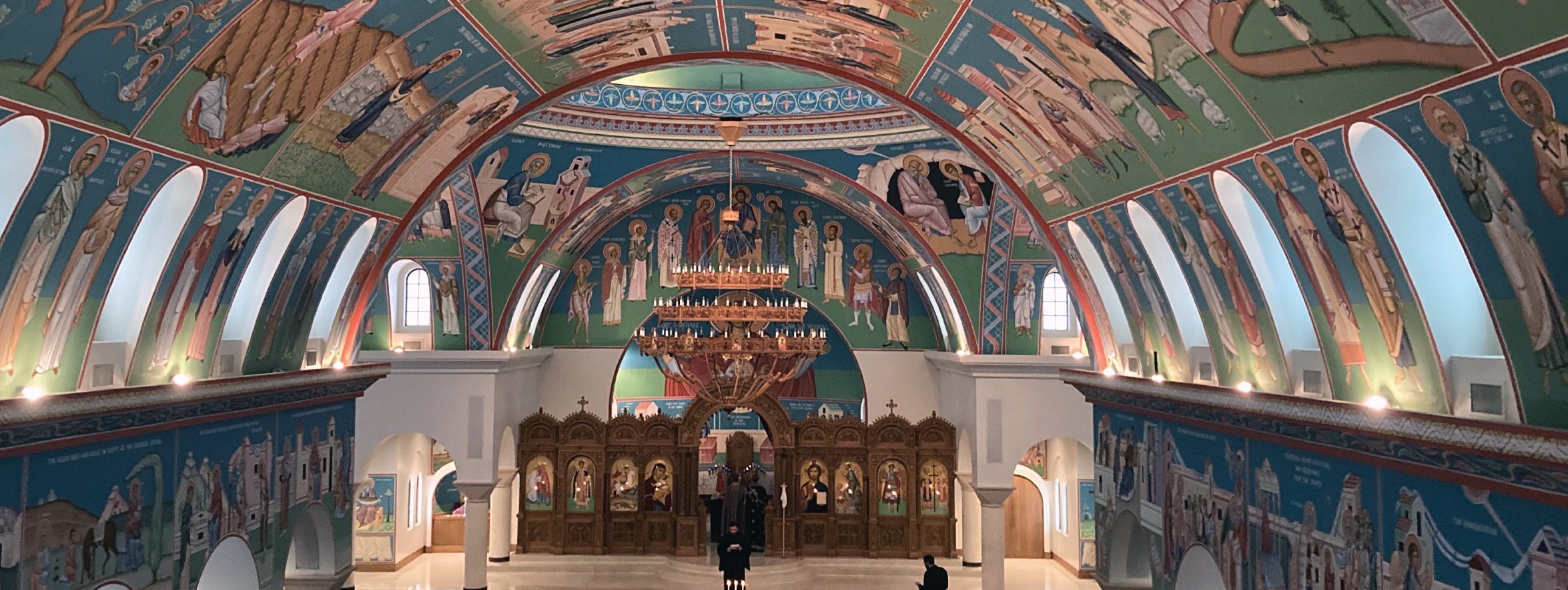Seven Functions of Holy Icons: Number Two

The iconography in the nave of Saint George Orthodox Cathedral in Wichita, Kansas provides many opportunities for education and contemplation.
Sunday, October 15 commemorated the Seventh Ecumenical Council at which icons were restored to the Church as a confirmation of the centrality of Christ's Incarnation in Orthodox theology and a necessary aspect of worship. St John of Damascus was a key figure in this restoration and in his Defense of Icons, he lists 7 functions of Iconography. This post is part of a series on these functions we hope will be educational and inspirational, and lead you further towards our Lord and Savior Jesus Christ.
Function 2 according to St John of Damascus:
They serve as a means of instructing in matter of the Christian Faith, of the teaching of the Church.
It has been said that icons are books for the illiterate (often attributed to Saint Basil). While true, taken on its own this may imply that if you can read, then you have no need for the sacred images.
Leontios of Neapolis said that "icons are books which lie open conspicuously in a church." Fr Pavel Florensky wrote in Iconostasis, "What the words of a sermon are for the ear, so the icons are for the eye." Something about these thoughts suggests that the sacred images go farther than just an alternative to reading.
When we enter a church, the icons are there, lying open "conspicuously," attracting our attention by their presence. You may feel upon seeing them that you are in a sacred place, and that you have left the profane world behind. This is a good beginning to our education in the church, for we are indeed entering a holy place where our Holy God is worshipped.
But the education continues. In the icons, we learn of real people who came before us and lived out their pursuit of God in a way that is worthy of high honor. Some of the signs within the icons tell us a bit about their lives. For instance, a cross in the hand of a saint usually means they were martyred; a spoon in the hand signals that the saint was a doctor of some kind; the clothing will hint at where they lived and maybe their vocation in the kingdom of God on earth.
Some icons present scenes from Christ's life and ministry on earth. These lie "conspicuously open" to teach us again and again, and we often gain deeper understanding of Christ's purpose and how He accomplished it as we contemplate the icons and remember what the correlating written gospels say.
Major feast day icons are especially full of theological instruction. They often seem to come alive when a sermon references the event depicted, and the hymnography adds another layer, presenting us a rich opportunity to meditate with awe and wonder on all that the event means.
![]()
Constantine Cavarnos in his Guide to Byzantine Iconography, describes the traditional icon of the nativity, and writes that it "tells us what the Bible tells us, and does so in a very clear, vivid, effective manner, by means of forms and colors."(p 134) He adds that "the kontakion that is chanted on Christmas says the same thing in words, melody, and rhythm." Observe:
Today, the Virgin bears Him who is transcendent, and the earth presents the cave to Him who is beyond reach. Angels, along with shepherds glorify Him. The Magi make their way to Him by a star. For a new child has been born for us, the God before all ages.
As you grow your icon collection at home, consider adding some major feasts, if you haven't already. These can encourage your faith and deepen your knowledge and understanding, as you bring home to the little church part of your experience at the temple.

